Pickleball’s popularity is soaring, and if you’re a newbie looking to join the fun, you’ve landed at the right place. I’m here to share some simple yet effective pickleball strategies that’ll help you master the game in no time.
The game may seem intimidating at first, but don’t worry. With the right strategy and a bit of practice, you’ll be hitting those balls like a pro. Let’s dive into the basics and get you started on your pickleball journey.
Understanding the Game of Pickleball
It’s crucial to understand the basics of pickleball before you can formulate a competitive strategy. The game of pickleball is a fun mix of tennis, badminton, and ping-pong. It’s played on a small court using a paddle and a plastic ball with holes. Pretty unique, isn’t it?
Court Layout and Scoring
The pickleball court is the same size as a doubles badminton court. It’s divided into two equal halves with a non-volley zone or ‘kitchen’. To score points, you’ll have to serve diagonally and land the ball within the opponents’ court boundary. Make note, only the serving team can score!
The Game Play
A game of pickleball usually begins with an underhand serve, followed by a sequence of volleys. It’s important to remember the double-bounce rule: each team must let the ball bounce once before volleys can occur. Sounds tricky? It does add a fun layer of complexity to the game.
The Right Equipment
Using the right gear can significantly enhance your game. Typically, pickleball paddles are larger than ping-pong paddles but smaller than tennis rackets. They’re usually made of lightweight materials like aluminium or graphite. As for the ball, it’s similar to a Whiffle Ball.
Applying your understanding of these basics to your practice sessions can be a good starting point. Keep practicing, and you’re sure to see improvements in your game!
In our next section, we’ll delve into some specific strategies for beginners, including serving, volleying, and positioning techniques.
Key Rules and Terminology
Pickleball is a game of strategy, and understanding the rulebook is just as important as honing your physical skills. As a beginner, you’ll find that familiarizing yourself with key terms not only helps you navigate the game better but also boosts your confidence on the court. So, let’s dive into some essential rules and pickleball jargon.
One term you’ll often come across is the “kitchen” or the non-volley zone. This is a 7-foot area on both sides of the net where volleying isn’t permitted. Stepping into the kitchen to volley – that’s a fault. If the ball bounces in this zone, you can step in to hit the ball. But remember, no volleying.
The next is the “double-bounce rule”. It dictates that the ball must bounce once on each side of the net before players can start volleying. It’s key to practicing good timing and control.
Another principle to keep in mind is the “serve”. You serve underhand, striking the ball below your waist level. The serve must land in the opposing team’s right service court if your score is even and in the left if your score is odd. Don’t serve until the receiver is ready.
Talking about “scoring”, it’s unique in pickleball. Only the serving team can score points. If the serving team commits a fault, the serve shifts to the other team member (in doubles) or the opposing team (in singles).
Here’s how a typical scoring pattern may look like:
| Serve | Score |
|---|---|
| Team A | 1 |
| Team B | 0 |
| Team A | 2 |
| Team B | 0 |
| Team B | 1 |
| Team A | 2 |
Practice these rules, refine your strategy, and you’ll soon see improvements in your game. Now, let’s move on to understanding specific strategies like serving, volleying, and positioning techniques for beginners.
Mastering the Serve
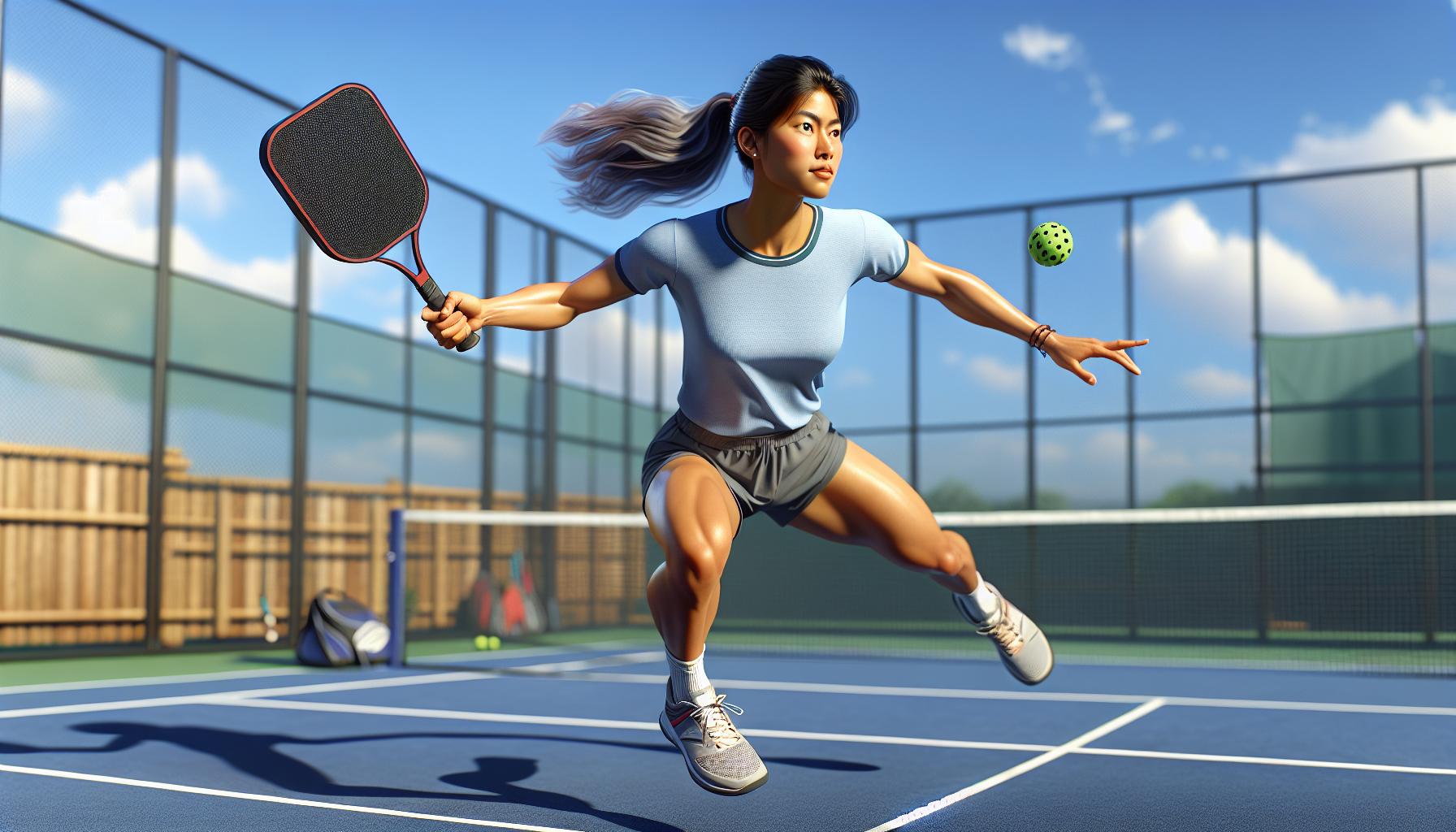
As with most racket sports, your serve in pickleball sets the tone for the rest of the play. I’ve learned during my years of playing, that a good serve can grant you instant dominance over your opponent.
In an attempt to help you dominate on court, we’ll dive into the specifics of serving in pickleball. The serve in pickleball is somewhat unique compared to other racket games. It’s an underhand serve, and the ball must make contact below your waist. While it might seem restrictive, this rule allows for a wide range of technical nuances that can be exploited to gain a competitive edge.
When starting the serve, the ball needs to be in the free hand, and the paddle must strike the ball in an upward motion. It’s important to remember, the ball has to bounce on the opponent’s side without touching the non-volley zone, often referred to as the ‘kitchen’.
Your serve style is essentially a personal thing, but consistent serves are often the most effective. Let’s look at some techniques that can lead to an improved serve:
- Deepest Serve: One of the most effective serves is to aim deep into the opponent’s court.
- Inside-Out Serve: This can keep your opponent guessing, by alternating between serving from the inside and outside of the court.
- High Toss Serve: Tossing the ball higher while serving can make it more difficult for the opponent to anticipate your serve.
These are just a few techniques you can try as part of your serving strategy. It’s great to experiment with various serves, and to figure out which ones work best against different types of players. In the end, the aim is to develop serves that are difficult to return, putting you in control from the start of the game. The thrill of getting that serve perfect; nothing quite compares.
Effective Return Strategies
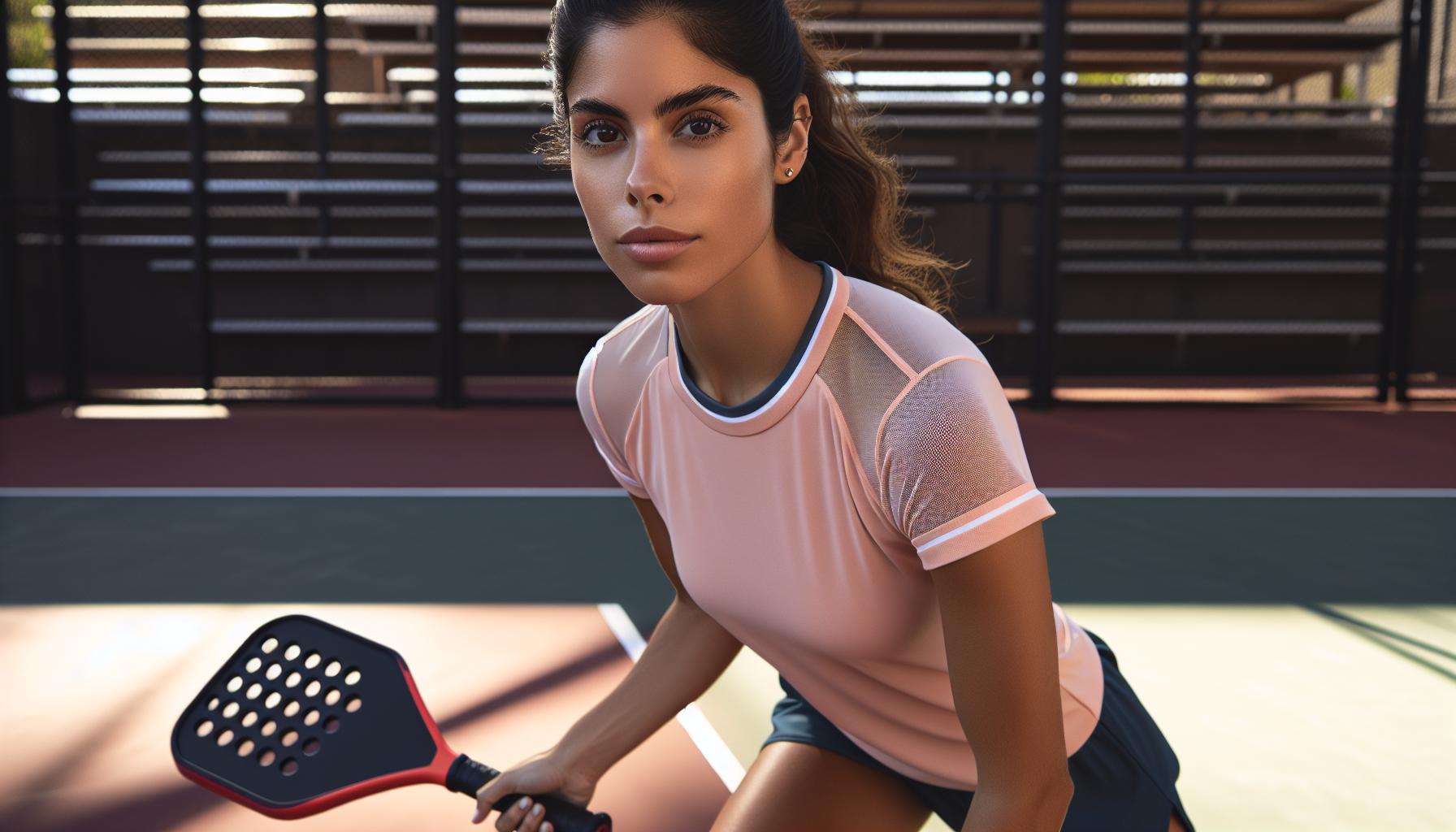
Returning a serve in pickleball is no less important than serving. I can’t stress enough that a strong return game can throw your opponent off balance. It builds pressure and forces them to commit errors. Returning with precision and consistency is a skill that needs to be honed, a point often missed by beginners. So let’s delve into some strategies to make your returns more effective and impactful.
There are a few key points to focus on when working to improve your returns. Firstly, stay low and ready. A low stance aids you in dealing with any type of serve that comes your way, be it a drive or a drop.
Another pro tip is to aim deep. If you successfully send the ball deep into your opponent’s court, you’ll force them into a defensive position. This gives you time to move to the net and gain a controlling position for the next shot.
Also, don’t underestimate the power of a cross-court return. It’s the longest distance in the game and more challenging for your opponent to handle.
Consider incorporating a disguised return into your arsenal. This strategy is about moving in one direction while hitting the ball in another, misleading your opponents about your intended return. It requires practice, but once mastered, it can prove extremely fruitful.
Another interesting tactic is the body shot. If executed well, it can catch your opponent off guard and provide you with a tactical advantage.
Here’s an overview of the key return strategies:
| Key Return Strategies |
|---|
| Stay low and ready |
| Aim deep |
| Cross-court return |
| Disguised return |
| Body shot |
While mastering these techniques won’t happen overnight, persistent practice can lead to significant improvements. So lock these points in your memory and apply them the next time you step on the court. In my experience, an effective return strategy in pickleball can be a real game changer, taking your play from average to exceptional. Now, let’s tackle another essential part of pickleball strategy: maintaining the advantage after the serve and return.
Positioning on the Court
Moving from serves and returns, another crucial aspect of pickleball is your position on the court. Positioning within the court plays a pivotal role in determining your in-game success and effectiveness.
One common mistake I often see beginners make is clustering around the centre line. On the three-dimension plane of the court, there’s much more than just lateral positioning to consider. Vertical positioning is also critical to executing your best moves. Frequently moving vertically – that’s front to back – on the court, makes your game more unpredictable while offering stronger defensive coverage.
Being aware of your court position is crucial and maintaining a balanced stance with agility to move quickly will ensure you’re ready for any shot thrown your way. This is why many successful players continuously focus on their footwork and stability during training. When the ball is in play, focus on always being on the balls of your feet, in a ready position to make quick, agile movements.
However, it’s also key to know your opponent’s positioning as much as your own. Understanding when your opponent is out of position opens opportunities to exploit their weakness with smart, strategic shots. Every point in pickleball inevitably revolves around making your opponent uncomfortable and taking advantage of their positioning errors.
Additionally, let’s talk about the importance of occupying the “the kitchen” or the Non-Volley Zone (NVZ). The NVZ, so-called because it’s a no-slam zone, extends seven feet back from the net. Dominating this area is vital to control the flow of play and gain an upper hand. While masterful pickleball players will always strive to be at the net to control the NVZ, it’s important to recall that you can’t volley therein. Strategize and adjust your positioning in the NVZ wisely to maintain control.
Emphasizing once more, practice is pivotal to mastering court positioning. Like serves and returns, positioning also requires consistent training and thoughtful approach to improve.
Conclusion
I’ve shared some key strategies for pickleball beginners, from mastering serves and returns to understanding the importance of court positioning. Remember, your stance and awareness of your opponent’s positioning can make a big difference. The Non-Volley Zone (NVZ) isn’t just a place on the court, it’s a strategic tool. Use it wisely to maintain control of the game. But don’t forget, all these strategies mean nothing without practice. So, get out there, implement these tips, and watch your game improve. After all, pickleball isn’t just about winning, it’s about having fun and constantly improving.

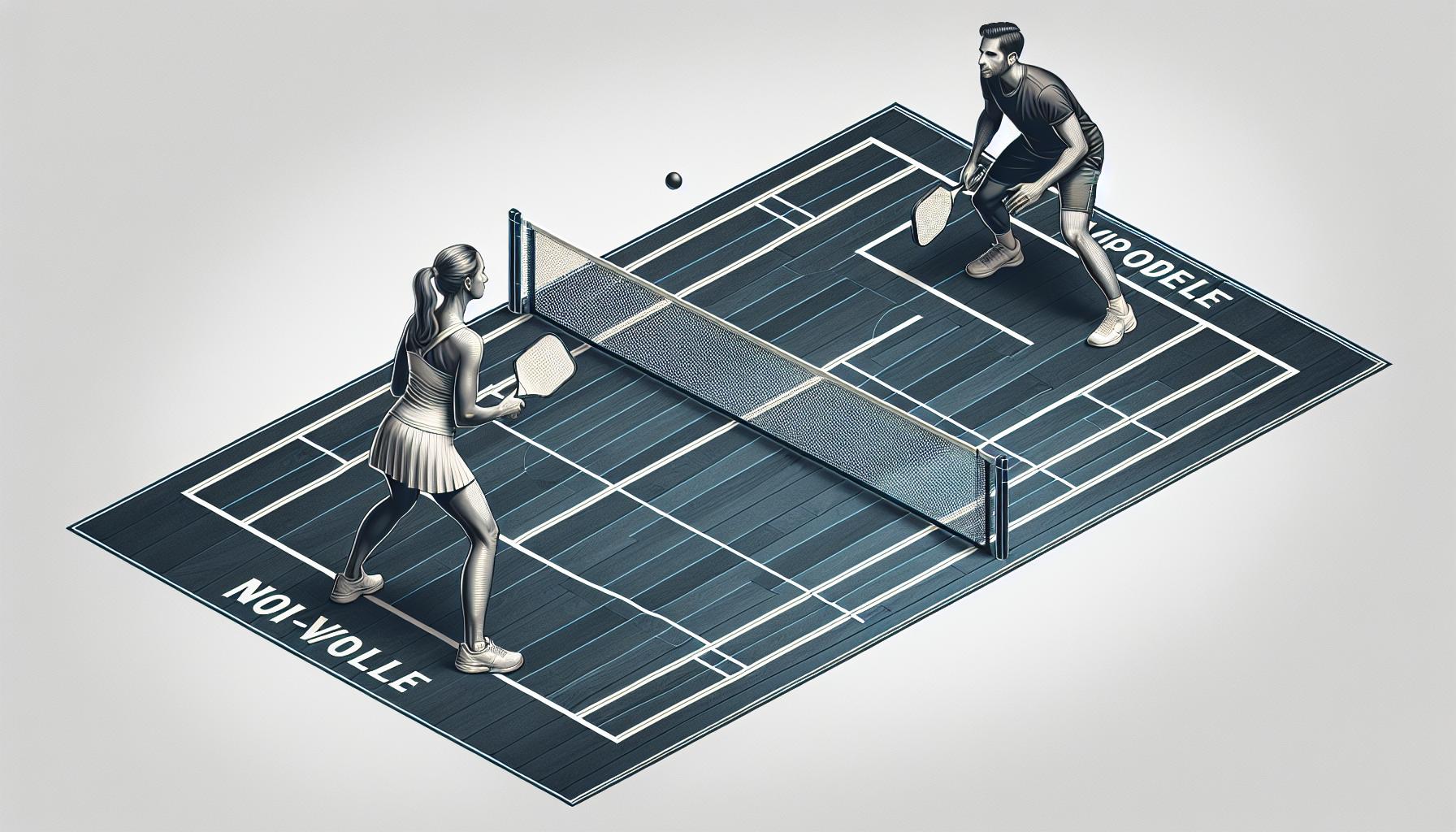









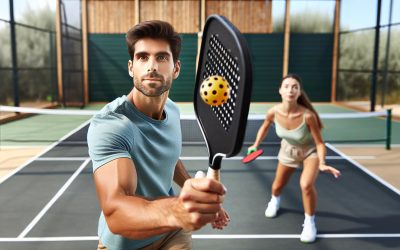
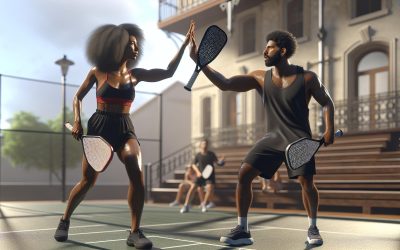

0 Comments